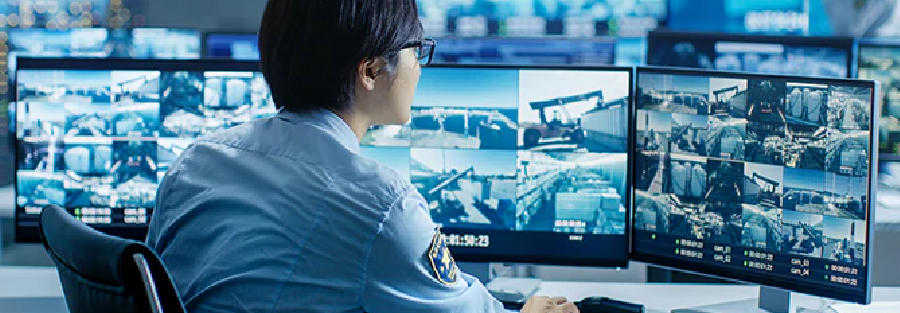Understanding what is surveillance is essential in today’s security-conscious world. Surveillance refers to the continuous observation of activities to deter crime and protect assets. A video surveillance system is a core component of modern security infrastructure. It uses surveillance video cameras, recording devices, and software to capture and store video footage.
Whether you are securing a home, business, or public area, a robust video surveillance system provides peace of mind. For professional installation and support, working with trusted video surveillance companies in India ensures your system is tailored to your needs.
How Does a Video Surveillance System Work?
A video surveillance system works by capturing footage through surveillance video cameras and transmitting it to recording devices or cloud storage. This allows for both real-time monitoring and review of archived footage.
Core Components of a Video Surveillance System
- Surveillance Video Cameras: These cameras capture high-resolution footage to monitor specific areas.
- Recording Devices: DVRs (Digital Video Recorders) or NVRs (Network Video Recorders) store the captured footage.
- Monitoring Software: Software that enables live viewing, playback, and video analysis.
- Network Infrastructure: Connects the cameras, recording devices, and monitoring software.
Key Features of a Video Surveillance System
1. Live Monitoring
A video surveillance system allows you to monitor your premises in real time using surveillance video cameras. Live monitoring helps prevent security breaches by enabling immediate responses.
2. Motion Detection
Many CCTV surveillance systems feature motion detection, triggering alerts whenever unusual movement is detected. This feature enhances security by helping you stay ahead of potential threats.
3. Cloud Storage
Modern video surveillance systems offer cloud storage, ensuring footage is securely archived and accessible from anywhere. This protects data from being lost or damaged.
4. Remote Access
Remote access allows you to view your surveillance video cameras from a mobile device or computer, providing flexibility and control over your security setup.
Types of Surveillance Systems
Different security needs require different types of surveillance systems. Here are some of the most common options:
1. CCTV Surveillance Systems
- Definition: Traditional wired systems that transmit video to a central recording device.
- Best For: Homes, small businesses, and retail stores.
- Advantages: Reliable and ideal for continuous monitoring.
2. IP-Based Video Surveillance Systems
- Definition: Systems that use digital signals to transmit video over a network.
- Best For: Businesses needing high-resolution footage and remote access.
- Advantages: Scalability, flexibility, and high-quality video.
3. Wireless Surveillance Video Cameras
- Definition: Cameras that transmit video signals wirelessly.
- Best For: Locations where running cables is impractical.
- Advantages: Easy installation and flexibility.
4. AI-Integrated Surveillance Systems
- Definition: Systems equipped with AI features like facial recognition and behavior analysis.
- Best For: High-security environments such as airports and government facilities.
- Advantages: Automated threat detection and advanced analytics.
By understanding these types of surveillance, you can choose the best option for your specific security needs.
Benefits of Using a Video Surveillance System
1. Crime Deterrence
The presence of surveillance video cameras helps deter criminal activities such as theft, vandalism, and break-ins.
2. Continuous Monitoring
CCTV surveillance provides 24/7 monitoring, ensuring your property is protected at all times.
3. Evidence Collection
A video surveillance system captures clear video footage, which serves as valuable evidence in investigations and legal proceedings.
4. Operational Efficiency
Businesses can use CCTV surveillance to monitor workflows, improve safety protocols, and enhance productivity.
For a customized solution, partnering with the Right Video Surveillance Partner ensures you receive expert advice and ongoing support.
Factors to Consider When Choosing a Video Surveillance System
When selecting a video surveillance system, consider these key factors:
1. Resolution and Image Quality
High-resolution surveillance video cameras provide clearer footage, making it easier to identify people and objects.
2. Storage Options
Choose between local storage (DVR/NVR) and cloud storage based on your data retention needs. Cloud storage offers off-site backup and remote access.
3. Scalability
Opt for a video surveillance system that can expand to include additional surveillance video cameras as your security requirements grow.
4. Remote Monitoring
Remote monitoring allows you to view your CCTV surveillance footage from anywhere, giving you greater control and flexibility.
Conclusion:
Why Video Surveillance is Essential
A video surveillance system is an indispensable tool for protecting homes, businesses, and public spaces. By leveraging surveillance video cameras and CCTV surveillance, you can deter crime, monitor activities, and collect critical evidence.
Understanding what is surveillance and the various types of surveillance systems available ensures you make informed decisions for your security. Exploring the Power of Video Surveillance Systems can also help you maximize the benefits of your investment.



